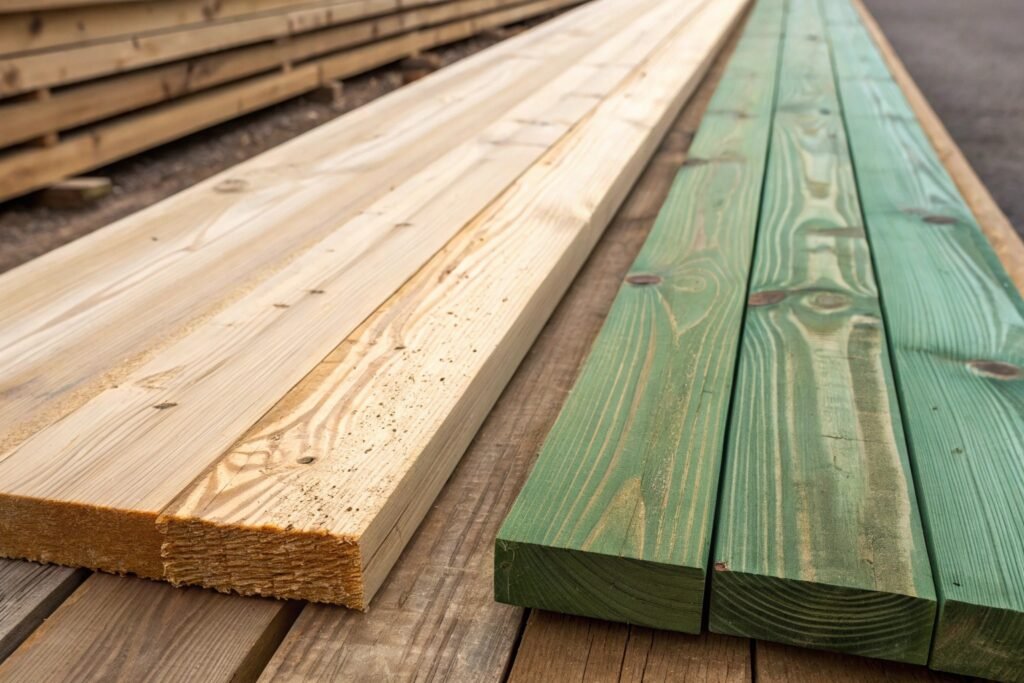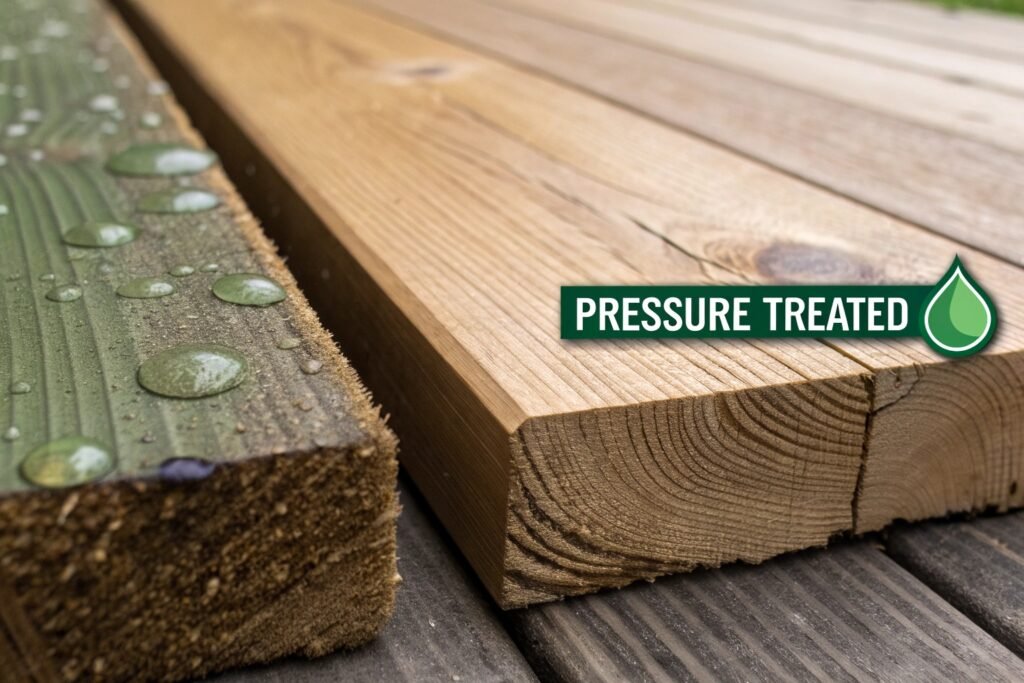Using untreated wood for outdoor or structural work could lead to fast rot, mold, or even collapse. But how can you be sure your lumber is treated?
Check for tags, green or brown tint, chemical smell, or water resistance—these signs help confirm if wood has been pressure-treated.

I’ve had clients receive mixed wood batches—some treated, some not. Without knowing how to spot the difference, you risk using the wrong material in the wrong place. Let’s break it down.
How can you tell if lumber is treated?
Not all treated wood looks obviously different. Some types look like regular wood—but they’re not. You need to inspect closely.
Look for an end tag, color staining, a chemical smell, or water beading on the surface—each signals treated lumber.

The 4 Fastest Ways to Check
Here’s how I teach new workers to identify treated wood on the job:
| Method | What to Look For | What It Means |
|---|---|---|
| Tag or Stamp | Marked with “PT,” “UC4,” or “Ground Contact” | Official treated wood certification |
| Color Tint | Green, brown, or black stains on the surface | Copper-based chemical treatment used |
| Smell | Sharp, chemical-like odor | Evidence of recent pressure treatment |
| Water Test | Drops bead up or roll off | Indicates sealing and chemical infusion |
If none of these signs are present, assume it’s untreated. For outdoor jobs, always demand tagged and certified treated wood.
How can you tell the difference between treated and untreated timber?
Side by side, some differences are subtle. Others stand out. Learn what makes treated wood distinct.
Treated timber is heavier, tinted in color, and may have a sharp smell, while untreated wood is lighter, neutral in smell, and absorbs water quickly.

Appearance, Weight, and Behavior
Here’s how I explain the difference when training clients on-site:
| Property | Treated Timber | Untreated Timber |
|---|---|---|
| Color | Green, brown, or darker tone | Pale, natural wood tone |
| Weight | Heavier due to moisture/chemicals | Lighter and drier |
| Smell | Chemical, often harsh | Mild, woody scent |
| Absorption | Resists water on surface | Water soaks in fast |
| Surface Texture | Sometimes oily or rough | Smooth, clean |
I’ve worked on site inspections where the only clue was a faint green edge on the timber—always look at end grains and surface marks when in doubt.
What is Class 4 treated timber?
It’s not just about whether wood is treated—but how deeply and for what use. Class 4 has a very specific meaning.
Class 4 treated timber is rated for ground contact and permanent outdoor exposure, offering the highest level of rot and insect resistance.
Understanding Timber Treatment Classes
Timber classes help match wood to exposure risk. Here’s how the classes break down:
| Class | Use Level | Environment Example |
|---|---|---|
| Class 1 | Interior dry | Furniture, framing |
| Class 2 | Interior humid | Bathrooms, covered basements |
| Class 3 | Above-ground outdoor | Decking, cladding, fences |
| Class 4 | Ground contact, outdoor wet | Fence posts, pergola bases, docks |
In export projects, we always insist on Class 4 treatment for wood that touches soil or is exposed to standing water—especially in humid countries.
How to tell if wood is heat treated?
Heat treatment isn’t the same as chemical treatment—but it’s required for shipping wood internationally.
Look for an HT stamp on the wood, which confirms it’s been heat treated to kill pests and comply with international standards.
Why HT Matters for Export
HT stands for “Heat Treated” under the ISPM 15 regulation. It’s required for pallets, crates, and timber shipping internationally. Here’s what to check:
| Sign | Meaning |
|---|---|
| “HT” Stamp | Complies with ISPM-15 |
| Country Code | Shows where it was treated |
| Treatment Facility Number | Traceable to certified kiln |
| No Chemical Odor | Unlike pressure-treated wood |
I’ve worked with export clients who were fined or delayed at ports because their lumber lacked this stamp. Never skip it if you’re shipping.
Conclusion
Use tags, color, smell, and water tests to tell treated from untreated wood—especially when safety, durability, or compliance is at stake.
